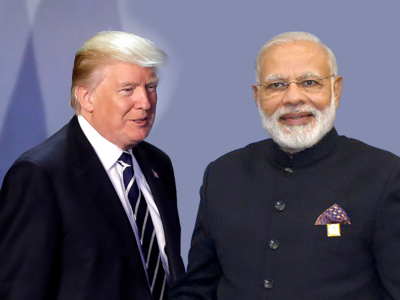Dismayed by the Kremlin’s annoying actions around the world, the Americans slapped the overwhelming sanction to hit Russian oligarchs where it hurts the most. The draft became public law on 2nd August 2017 after the signature of president Donald Trump, who was doomed on the punitive measures against Moscow and known as Countering America’s Adversaries through Sanctions Act (CAATSA). It was specifically against-
- Russian Federation
- Iran
- And North Korea
If someone analyses this law (CAATSA) and especially the title II, they will easily understand that the intent is to miff Russia with the castigatory measure. The slice covers the areas like Oil & Gas Industry, Defense Manufacturing & Aerospace, Financial Institutions and the power sector.
Following are the sections from the law that exclusively deals with Russia:
Sec. 224. Imposition of sanctions with respect to activities of the Russian Federation undermining cybersecurity.
Sec. 225. Imposition of sanctions relating to special Russian crude oil projects.
Sec. 226. Imposition of sanctions with respect to Russian and other foreign financial institutions.
Sec. 227. Mandatory imposition of sanctions with respect to significantcorruption in the Russian Federation.
Sec. 228. Mandatory imposition of sanctions with respect to certain transactions with foreign sanctions evaders and serious human rights abusers in the Russian Federation.
Sec. 229. Notifications to Congress under Ukraine Freedom Support Act of 2014.
Sec. 230. Standards for termination of certain sanctions with respect to the Russian Federation.
Sec. 231. Imposition of sanctions with respect to persons engaging in transactions with the intelligence or defense sectors of the Government of the Russian Federation.
Sec. 232. Sanctions with respect to the development of pipelines in the Russian Federation.
Sec. 233. Sanctions with respect to investment in or facilitation of privatization of state-owned assets by the Russian Federation.
Sec. 234. Sanctions with respect to the transfer of arms and related materiel to Syria.
Historically Russia has been India’s top defense equipment supplier and that has helped Russian economy enormously. Though in the recent past India has decided to diversify its defense equipment sourcing and in the quest US has emerged as one of the largest source of the equipments along with France and Israel. Despite the diversification Russia still accounts 50 % of the Indian defense equipment. The arms supplier includes the back bone of the defense forces SU 30 MKI, MIG 29, INS Vikramaditya, INS Chakra, Supersonic Brahmos. Russia not only supplies the system at flexible terms but also allows favourable joint ventures and technology transfer.
The recent reports emphasized that India will get sanctioned for the pre-planned defense procurement from Moscow under CAATSA. Although avoidance of the sanctions appeared inevitable but the understanding between one of the greatest democracy and the largest democracy again proved it mettle. The Indo-Russian relationship has deteriorated in the recent past whereas New Delhi had strengthened its economic and security understanding with the United states. Economically weak Russia has tilted towards India’s arch rival China and thus its need to collaborate with United States is ever increasing.
India is facing the most multifaceted security challenge in the world. Often Indian air force chief can be heard talking about the full spectrum of the operation and Indian Army chief talking about the two and a half fronts of the war. The duo of hostile Pakistan and unpredictable China pumping unprecedented money in the military infrastructure and encirclement of China has made the intricacy aggrandized. To address the innumerable security threats, it has been an endless quest of India’s establishment to fortify its defence readiness, by arming its security and armed forces with contemporary arms. In the endeavour New Delhi has spent a major chunk of its resources with the defence budget for 2018-19 totalling to Rs 2,79,305 crore (US$43.4 billion). The defence capital expenditure amounts to Rs 93,982 crore ($14.3 billion), which represents 34 per cent of the defence budget and 31 per cent of total central government capital expenditure. India has been one of the largest importer of foreign arms and was named as largest importer of defense equipment in the world.
Though in the past United States was spotted with the Pakistan but the calculus has changed since 9/11 incident and from the year 2008 onwards United States has snapped orders more than 15 billion. The significant ones are-
- P8I Neptune maritime reconnaissance aircraft – Known as submarine hunter
- C 17 Globemaster
- C – 130J Super Hercules
- Apache attack helicopter
- Chinook heavy lift helicopters
- M 777 – Ultra light howitzers
The booming Indo-US defense ties did not get damper with the dark clouds of the CAATSA. Though the past is still haunting many across India but the world is changed now and it’s moving towards what Prime Minister Modi often terms as “Multipolar”. It is also nearly dreadful for New Delhi to completely wipe out Russia’s presence by the virtue of their significance in addressing many of the crucial defence equipment requirements of the Indian armed forces. As once said by then Admiral Harry B Harris, Jr heads of the US military’s enormous Pacific Command that “can’t expect India to go cold turkey on Russian arms”.
With China getting J 20 fighter jet operationalised and strengthening the military arm in the Tibet region, the need of the S 400 Triumf system is more than a necessity for India and the major hurdle was CAATSA. The $ 4.5 billion deal will be sealed soon and has provided a further boost to Indo-US strategic partnership.
